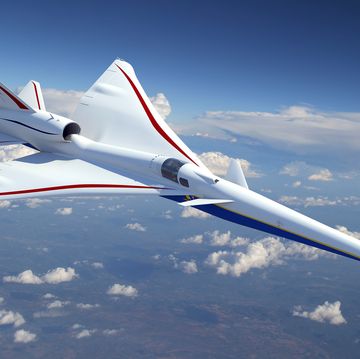When the United States moves Patriot missile batteries, people pay attention. Patriots are the go-to, land-based weapons system that the United States and 12 of its allies use to defend airspace against aircraft, cruise missiles, drones, and ballistic missiles. Their presence changes the strategic balance of wherever they appear. That's why the world certainly took notice last week when the U.S. removed two Patriot batteries from Turkey, a signal that they may be needed elsewhere in the Middle East, Europe, or the Korean Peninsula.
Patriots have been around since the Cold War, but they've been upgraded so many times they are virtually unrecognizable. The U.S. has invested more than $2.6 billion in Patriot since 2013 alone and has committed to fielding the system until at least 2048. Selling Patriot abroad also means big money; its vendor Raytheon has scored $5 billion in new contracts around the world since December.
So keeping this system viable is a big business, too, and Raytheon invests millions in researching new ways to keep Patriot technology ahead of the enemy's. Officials at Raytheon told PopMech that the U.S. government recently cleared a next-generation Patriot system radar for export, and added that they've demonstrated the pilot array to a number of countries, including the U.S. and Poland. It's all based on one little material that could make a Patriot's radar more powerful and more efficient.
A souped-up, more sensitive radar
Over the past 15 years, Raytheon has invested more than $150 million of its own money into something called Gallium Nitride, or GaN. The new Patriot radar uses the material in a new semiconductor that promises vast gains in power and efficiency.Today's radars typically use Gallium Arsenide semiconductors, but the GaN semiconductors can operate at higher voltages, greater radio frequency power density, and smaller sizes than their predecessors. GaN can run hotter and cheaper than GaAs semiconductors—in essence, they can handle higher amounts of energy.
Why is this beneficial? It all comes down to the way modern radar works. Instead of swiveling a radar to scan the sky, new arrays use transmit/receive antenna modules that are mounted by the thousands on flat faces to steer beams electronically. Hence the name Active Electronic Scanned Array (AESA) radar.
Having a souped-up, more sensitive AESA radar is an obvious advantage, but there's something else: The small, powerful GaN panels can be mounted on the reverse sides of a flat-faced AESA radar chassis, enabling the system to sense incoming attacks from 360 degrees.
"A single rotating radar cannot support missile engagements for stressing targets, or something called a missile raid—the near-simultaneous arrival of multiple missiles from different axes," says Norm Cantin, Director of Patriot AESA programs at Raytheon. "Having 360-degree capability enables the military to better defend against threats from all directions."
The next big thing
People who know semiconductor tech know that GaN has been heralded as the next best thing for a long time. Adoption into the real world has been slow, mostly due to the laborious and expensive manufacturing methods. (You have to grow layers of GaN onto substates.) Raytheon is leading the charge, betting big time that this material will be marketable around the world inside radar designed to thwart air attacks. To date, Raytheon is the only manufacturer that has a Pentagon-approved, weapons-grade foundry that has achieved low-rate production, called "Manufacturing Readiness Level 8" in Pentagon-speak.
"Keeping it in-house ensures that we can meet our schedule," says Cantin. "If any sort of challenges arise, we aren't dealing with a supplier half-way across the country who has other customers to worry about – we are working with colleagues in the next building."
The Patriot may be an easy sell, given the battle field trends spotted in ongoing conflicts in the Middle East and Eastern Europe. "The threat is evolving, improving, and proliferating," Cantin says. "Non-state actors now have access to ballistic missiles, cruise missiles and drones. We saw that happen a few weeks ago when the Saudi military used Patriots to intercept a SCUD fired by Yemeni rebels. And the threat continues to improve, not only technologically, but with better tactics, techniques, and procedures."
Joe Pappalardo is a contributing writer at Popular Mechanics and author of the new book, Spaceport Earth: The Reinvention of Spaceflight.













